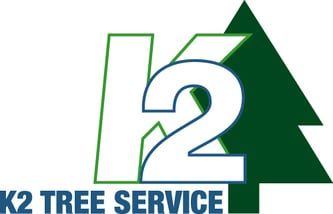How Can You Tell If Your Trees Need Watering? | Sound Tree Care LLC
How To Tell If Your Trees Need Watering

6 Signs Your Trees And Shrubs Need Watering
1. The Soil Is Dry At Your Tree’s Base
The simplest, most effective way to tell if your trees and shrubs are getting enough water is to
test the soil.
For established trees, test the root zone. For a new tree, test a soil sample at its base.
Quick Check
- Using a screwdriver, push it 6 inches into the soil. If it’s hard to do, your trees need water.
Accurate Check
- Dig 6 to 8 inches deep and grab a handful of the soil. The soil should be cool and moist. If it’s soaking wet or muddy, you’re over-watering.
Roll it into the ball if the soil is drenched or sandy. If it
crumbles, your tree needs more water. Poke the soil ball. If it doesn’t budge, you have clay soil.
2. Wilted, Drooping, Discolored, Dry, Curling Leaves
Inspect the leaves for signs of dehydration, such as:
- Wilting
- Drooping
- Turning yellow
- Showing fall colors prematurely
- Turning brown on the edges
- Curling
If your trees show any of all of these signs, they likely need watering. If the soil test indicates that your trees are receiving adequate moisture, have a local arborist or
tree care company inspect your tree for
pests and disease.
3. Shrinking Fruit, Leaves, Roots, Or Stems
Green leaves, fruits, stems, and roots may shrink if your tree needs watering.
4. Radial Cracks In The Trunk Of The Tree
Shrinking due to dehydration can cause
radial cracks in the tree trunk.
5. Yellowing And Early Dropping Of Leaves
Leaves of Ash, linden, hickory, and black locust trees will
yellow and drop when they do not get enough water.
6. Bent Or Drooping Needles
Coniferous trees like pine, spruce, and fir show signs of dehydration in the needles.
Bent or drooping needles is the first sign. Eventually, the needles fade, turn brown or remain green but permanently bent.
If you identify any of these issues in your trees and shrubs,
they need watering.
How To Water Your Trees And Shrubs
The best way to
water your trees is by setting your hose (without a nozzle) to a drizzle, placing it at the base or between the roots in the above-ground root zone, and leaving it there
2 to 3 hours. Move it to a new location and leave it there for 2 to 3 hours.
Repeat
this 2 more times. The City of Seattle recommends giving your tree about
5 gallons of water per inch of tree trunk diameter.
Pro Tip: Young trees
require more frequent watering than mature trees and cannot withstand drought or heavy rain as well as established trees can. For help caring for your young trees, talk to a
tree care
service near you.
How To Fix An Over-watered Tree Or Shrub
Excess watering can cause root rot, harmful fungi development, and long-term stress for your tree.
1. Stop watering. Don’t water your tree for a week or longer. Before you get out your garden hose, do the screwdriver test. If the soil is still moist, leave it for another week or two.
2. Fix the soil. If you have clay soil, mix compost into the soil to help it drain better.
3. Inspect for drainage issues. After it rains, check for water pooling around your tree and identify where it’s coming from. Is the water flowing downhill and collecting at the base of your tree? Does your drain spout empty too close to your tree?
If any of those issues are causing water to pool around your tree’s base, do what you can to remedy the problem. If you cannot fix the issue, you may need to move your tree or shrub to a better location.
A tree care specialist near you can help you determine whether the pooling issue can be fixed and offer recommendations for the best way to help your tree. If
removing
and transplanting your trees or shrubs is the best option, they can provide that tree service for you.
Mulching To Prevent Over-Watering And Dehydration
Mulch
is your tree’s best friend. Applying a 2 to 3 inch layer
of organic mulch around the base of your tree can absorb excess moisture to prevent root rot and protect the soil from drying out during drought.
Another Way To Tell If Your Trees Are Getting Enough Water
Another way to tell if your trees are getting enough water is to install a rain gauge on your property where it won’t be sheltered. Mature trees need
1 inch of water every week. If you’re not getting enough natural precipitation, you need to supplement by watering your trees.
You can also find out how much rainfall your plants are getting by following your local
weather network or using data compiled by your
local airport.
Sound Tree Care LLC
is a tree care company serving Seatac and the greater Seattle, Washington, area with superior tree pruning, tree rehabilitation, support systems, and more. With a certified arborist on our team, we can address any concerns about your tree and provide you with the fall tree care services you need.












